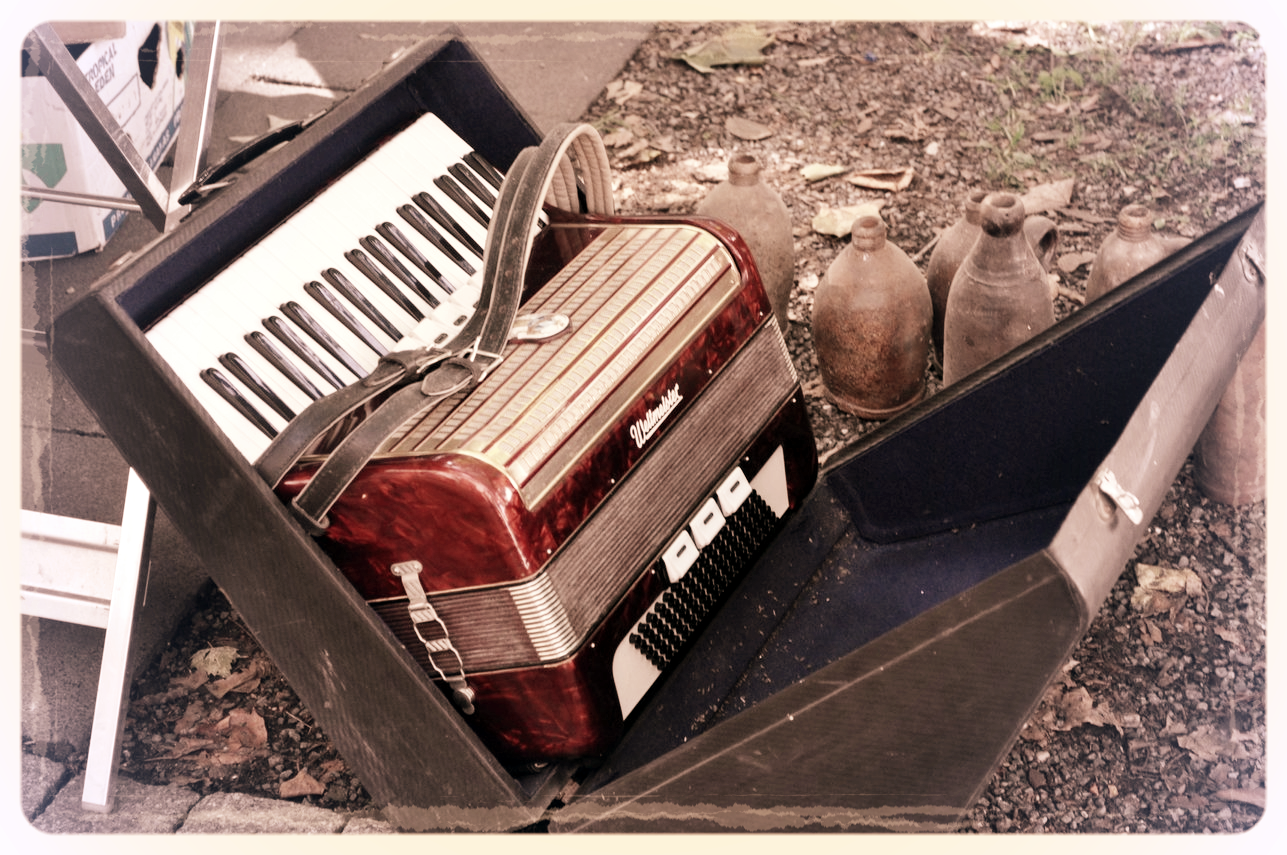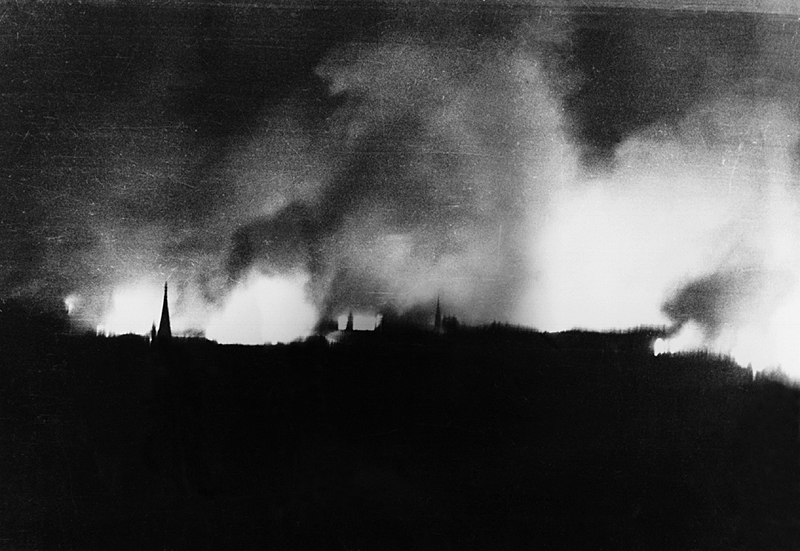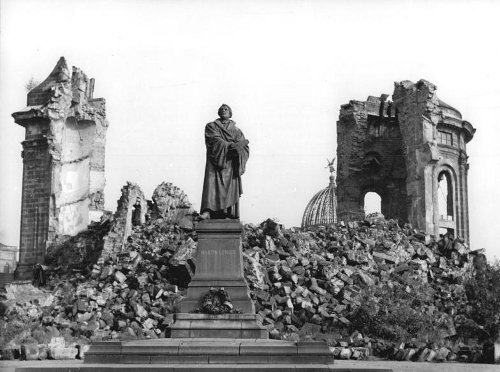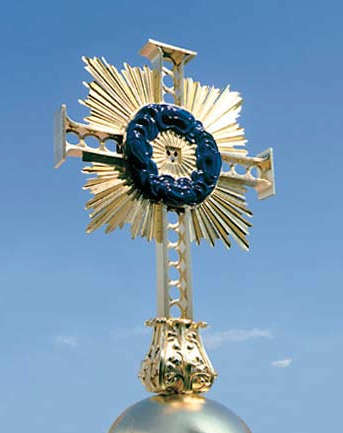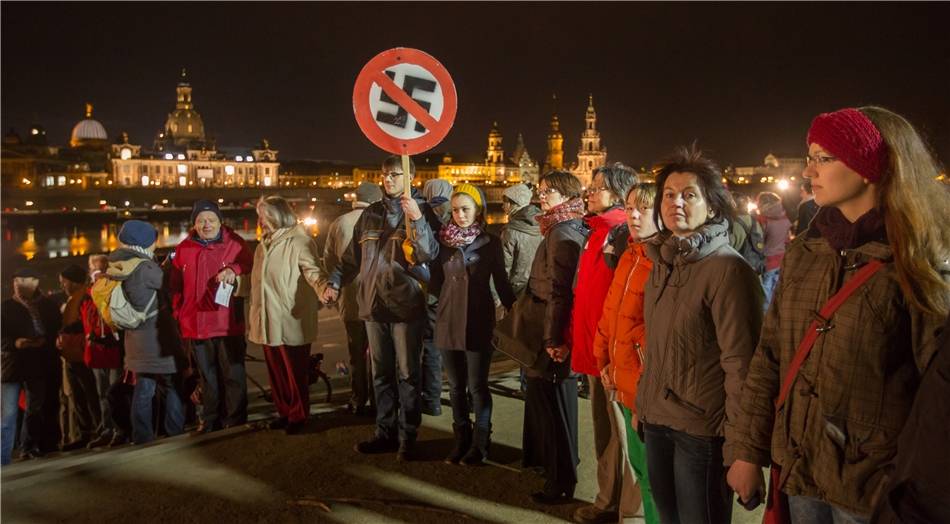February 13, 1945
/After living here in Dresden for the past 2 and a half months, visiting the historic sites, and walking through the Old Town section, it's impossible to imagine that it ever could have looked like this. Yet, if we could have been here this time, 69 years ago, this is exactly what we would have seen. Beginning the night of February 13, British and American forces launched an all-out assault on the city of Dresden. During several raids over the course of two days, a total of 650,000 incendiary bombs were dropped, along with hundreds of tons of other high explosives. The historic city center and surrounding areas were absolutely leveled, and this once-beautiful "Florence on the Elbe" vanished. The magnificent Frauenkirche, - or, "Church of Our Lady" - stood for over 200 years as one of the treasures of Dresden. On the morning of February 15, after burning for over a day, the massive dome finally caved in, and the rest of the structure collapsed with it.
The bombed out Frauenkirche, with statue of Martin Luther
There was a desire among the people of Dresden to rebuild the Frauenkirche starting immediately after the war, but nothing ever came to fruition. In Soviet controlled East Germany, the ruins were never cleared. At one point there were plans to remove the rubble and build a parking lot, but popular sentiment won out, and the decision was made to leave the ruins as a memorial to war and a reminder of its devastation. Even as other buildings were restored around it, for over 40 years, the ruins of the Frauenkirche lay as they were at the heart of Dresden.
1967
1992 - Shortly before restoration began.
After the fall of the Berlin Wall in 1989 and the reunification of Germany the following year, plans were immediately begun for rebuilding the church, with the actual work beginning in 1993. The reconstruction was largely a grass roots effort funded by individual donations from throughout Germany and around the world. The total cost for the restoration was €180 million with over €100 million coming from private donations. The restored Frauenkirche was completed in 2005 and dedicated in October of that year and now once again dominates the Dresden skyline.
If you take a look at the walls of the restored church, you'll certainly notice something interesting about how it looks. The lighter stones are all new, and the darker ones are stones that they managed to salvage from the wreckage. In this case seen below, one of the entire corner walls that remained standing after the bombing and through the centuries of the GDR was even able to be incorporated as a whole. One particularly moving story has to do with the cross on top of the dome. The old cross was discovered in the wreckage, mangled and burned but largely in tact, and now sits inside the church building. The new gold cross and orb come from England and were created by a smith whose father was one of the bomber pilots in the 1945 attack.
The Frauenkirche is once again a powerful symbol, not only of the destruction of war as seen in the black stones, but also of a restored Dresden, a renewed German people, and through the funding from all across Europe and the world, a symbol of a more unified and restored world. Unfortunately, the world is not totally unified. In Germany, the extreme right-wing movement is still alive in some places. In the last 10-15 years, these neo-Nazis have decided to use the anniversary of the bombing of Dresden as a rallying point for their party. A large portion of their strategy is to rewrite history by denying the holocaust and painting the German people as the major victims of WWII. The bombing of Dresden, as a supposedly innocent, non-military target, fits in nicely with this revisionist history. In 2007-2009, the Nazi demonstrations reached a peak with over 6,000 protestors from around the country and across Europe in attendance. However, the counter protesting movement has become more and more active as well. This year, the Nazis wanted to hold their gathering in front of the Frauenkirche itself, but were not granted the permission. They do have protected freedom of speech and a right to gather, but they do not have free reign to do whatever they please. In fact, through some turn of events, this year they did not obtain permission to demonstrate on the 13th at all. On the night before, February 12th, only about 500 neo-Nazis showed up for a march through parts of the city. And they were met by over 1,000 counter protestors who attempted to block their march!! This year, counter-protesters also organized a walk to visit various Nazi sites and other relevant locations around the city as a reminder that Dresden was not completely innocent. It's so sad that they would even have to do this and focus so strongly on the negative parts of their history, and yet it's a powerful sign of their determination to fight against racism and prejudice.
Each year, the on night of February 13th, the city of Dresden holds a special gathering for remembrance and reflection. People wear white roses, light candles, and even form a human chain surrounding the area of the city that was destroyed. This year, 11,000 residents came out to help form the chain around the old city and across the bridges into parts of the city on the other side of the river. Unfortunately, we were not able to be a part of the chain this year, but we really hope to be there next year!
War is terrible and tragic. For those nations directly involved, as well as for the entire world, there will almost certainly never be an end to our discussions of World War Two, it's causes, consequences, and moral implications. What is certain, though, is that war changes people and cultures, and the marks it leaves on a nation and even on individual cities can last for centuries. 69 years after the bombing of Dresden as well as the end of the war, there is a small and sadly vanishing number of people still living who experienced and remember the events of those days. And yet the city, its people, and the people of Germany as a whole, are still confronted with the past. We are just getting started, but we are so excited to be here, to continue learning about this great city, and to share with them about the great love that God has for them. Thanks for reading and going on this little historical journey with us!!
